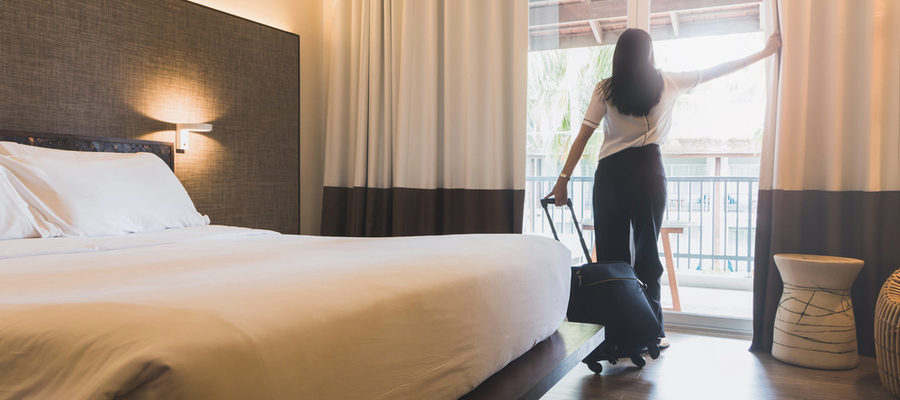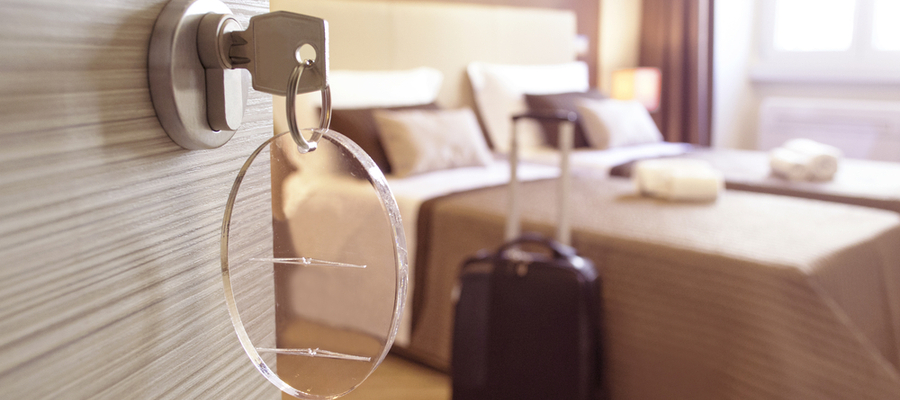While many hotels have focused attention in recent years on helping reservations agents increase their sales effectiveness, many are still overlooking the numerous other sales opportunities that front desk sales associates encounter everyday. One such opportunity is the walk-in inquiry. Depending on your market segment, brand, and especially your location, walk-in sales can represent a significant source of additional revenue.
Unfortunately, the hotel industry overall does a less than adequate job of selling to walk-ins. Typically, the car pulls up out front and someone gets out; sometimes it’s the mom, sometimes it’s the dad, sometimes it’s the 12 year old kid. Regardless of who it is, they all ask the same question: ‘How much are your rooms?’ All too often associates simply say ‘$99 a night.’ Nothing more is mentioned other than price. And what’s the worst mistake you can make in sales? Quoting a price without demonstrating value.
When you stop to consider it, the walk-in sales opportunity provides the hotel with some significant advantages over other distribution channels. For one, the sales person can visually evaluate the guests needs and wants. Are they dressed as if on a business trip, or on vacation? What is their age? Are they traveling alone or with family? What is their level of commitment; do they park the car and walk-in with luggage, or do they just run in to find out the price?
A second advantage is that the sales prospect can see the product firsthand and is able to formulate a first impression. (This is why it is critical for hotels to maintain curb appeal.) Another significant advantage in selling to walk-ins is that it takes more effort for the prospect to shop around. It’s harder to get back in the car and drive down the road than it is to click on the next Internet link or to dial the phone number of the next property.
If you’re looking to capture and convert more walk-in inquiries into bookings, here are some training tips to review at your next front office meeting:
- Connect With The Customer. Fundamental guest service principles will help you gain a competitive edge. Greeting the guest before they greet you, establishing eye contact, smiling, and using positive body language will set you apart from competitors.
- Offer A Menu Of Options. Depending on your inventory of rooms and packages, you’ll want to offer two or three choices when possible, versus only quoting the lower rate. For example, offer a traditional guest room and then an executive level room, or non-view and view rooms; or a room versus a suite. Or if your hotel has a limited number of room categories, you might still be able to offer a menu of ‘rate’ options such as a ‘room only’ rate and a second rate option that includes other services (such as breakfast, parking, or Internet.) Offering a menu of options migrates guests into a ‘which should I choose?’ versus ‘Should I choose to stay here?’ decision making process.
- Describe The Room And/Or Rate Option. Common industry terms like ‘standard room’ and ‘continental breakfast’ do little to convey value and to entice guests. Instead, help them take psychological possession by fully describing the furnishings, views, concierge level lounges, and/or continental breakfast presentations. Remember to use the knowledge gained from reading the guest to point out features that might provide a benefit; instead allure and entice them with visually and emotionally descriptive language.
- Avoid positioning last-sell or higher rated options in the negative. When the only rooms available to walk-ins are either the highest-priced or least desirable, which is frequently the case in high-demand situations, it’s important to make them sound as appealing as possible. Rather than saying ‘Oh, we only have our suites left’ instead, create a sense of urgency with ‘Oh good, we still have some of our suites, which feature…’ Instead of saying ‘All we have left are our limited view rooms,’ reiterate value by saying ‘Although this room does have a limited view, you still have all the same amenities and services as with all our rooms, and I have to say this room really is a great value at this time.
In addition to training your front desk to utilize these and other sales techniques, it’s also important to measure the results both individually and on a department-wide basis. If your property management system allows, assign a special source code to walk-ins. Otherwise, create a form to manually record your results. Of course, you’ll also want to challenge your staff’s competitive spirit by posting the results on a ‘daily,’ MTD, and YTD basis, and then to celebrate your success via staff recognition and/or incentive programs.
By employing the basic sales principles for capturing walk-ins, your front desk team can help your hotel maximize it’s market share even in a down market.
Visit www.kennedytrainingnetwork.com for details or e-mail him



